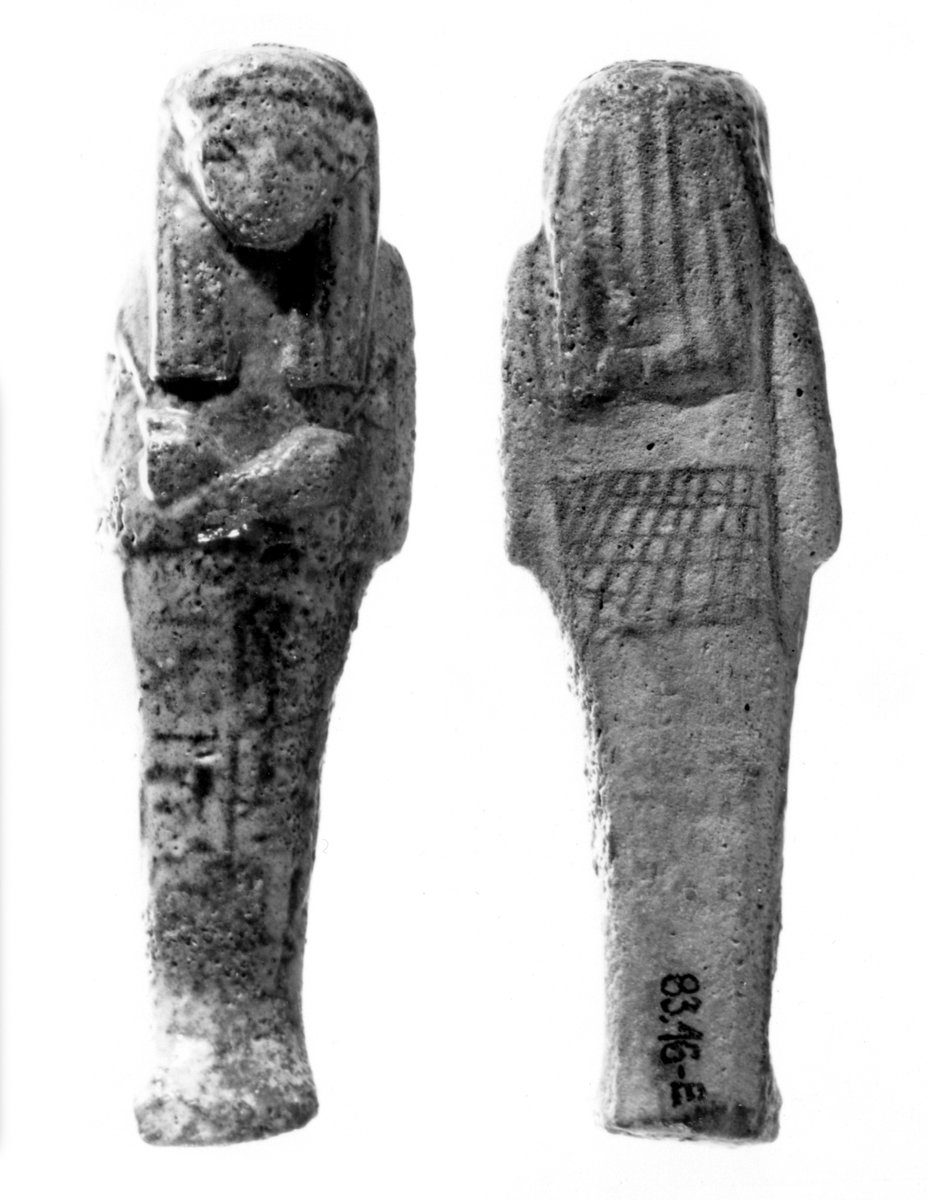
Shabti
Egyptian Art
| Place of production | Egypt |
|---|---|
| Date | Third Intermediate Period |
| Object type | amulet |
| Medium, technique | Egyptian faience |
| Dimensions | 2.8 x 2.6 cm |
| Inventory number | 51.2632 |
| Collection | Egyptian Art |
| On view | Museum of Fine Arts, Basement Floor, Ancient Egypt, Temples and gods |
From the Eighteenth Dynasty onwards, the aegis appeared as an element of the menat (counterpoise necklace), as a part of the counterpoise. It represents a wide, beadwork collar (wesekh collar) surmounted by the head of a deity, most frequently of a lion- or cat-headed goddess (Isis, Sakhmet or Hathor). The aegis became popular from the Third Intermediate Period onwards, and it could be made in various forms, sizes, and materials it also appeared as an amulet at this time. This white faience amulet represents the god Bes above the wesekh collar divided by horizontal rows. The god can be identified by his typical wide, stubby nose, the round, slightly bulging eyes, the protruding ears, and the thick beard. His feather headdress is missing, but its base can be seen. The necklace was held by its owner and functioned as a ritual rattle. It was thought to appease the dangerous power of God, and thus it provided protection. The Bes’s appearance could be explained not only by his lion-like head and the god strong attachment to the goddesses Isis and Hathor but also by his association with music.
According to the ancient Egyptian myths, Bes was able to pacify with his music (drum, rattle, lute, etc.) the destructive goddesses and ward off evil.
This record is subject to revision due to ongoing research.